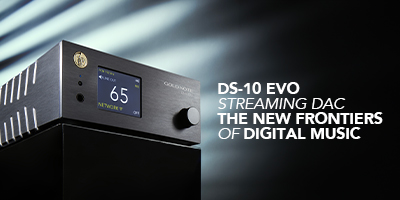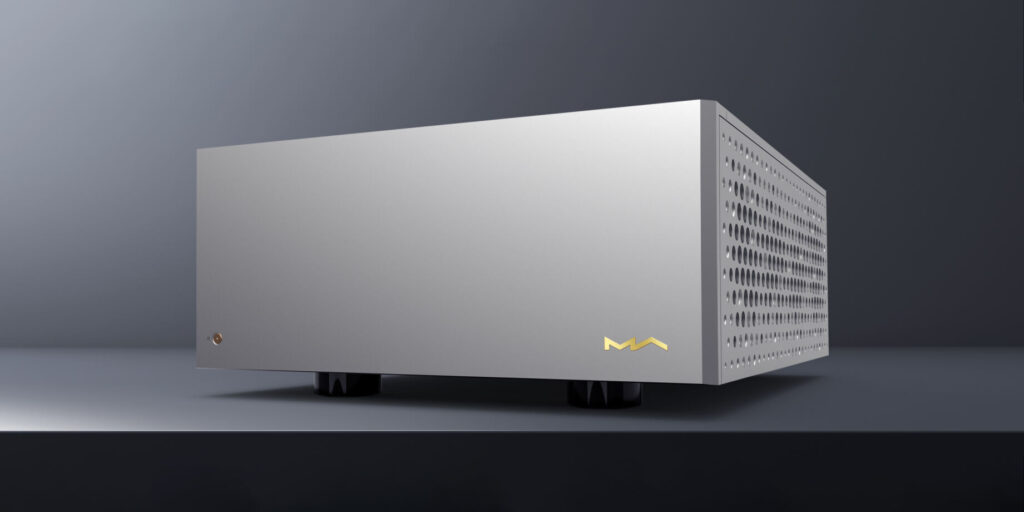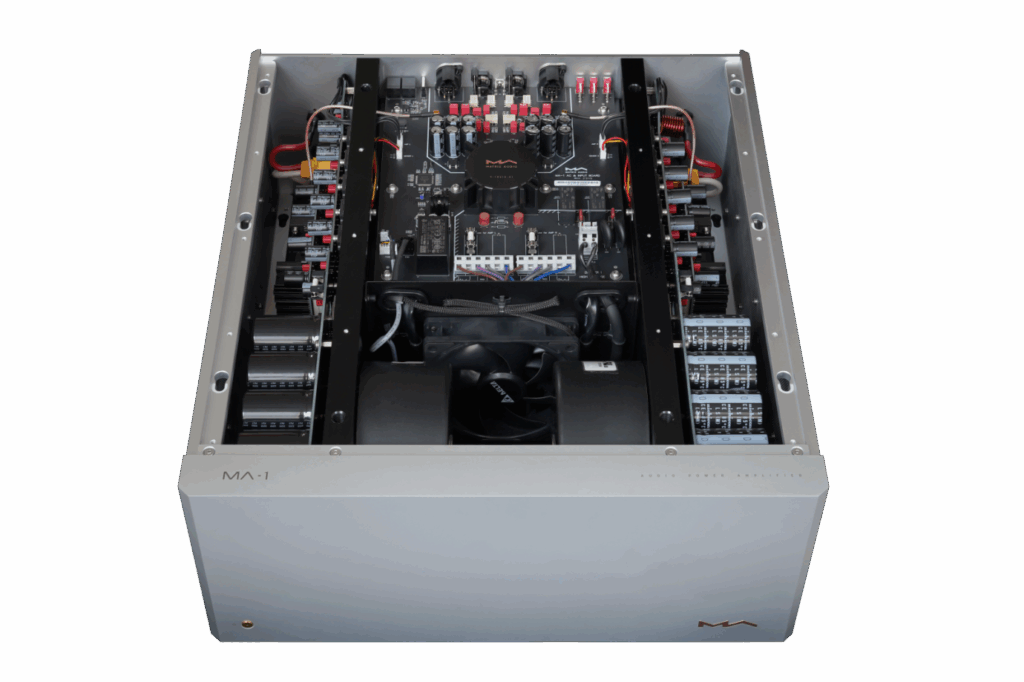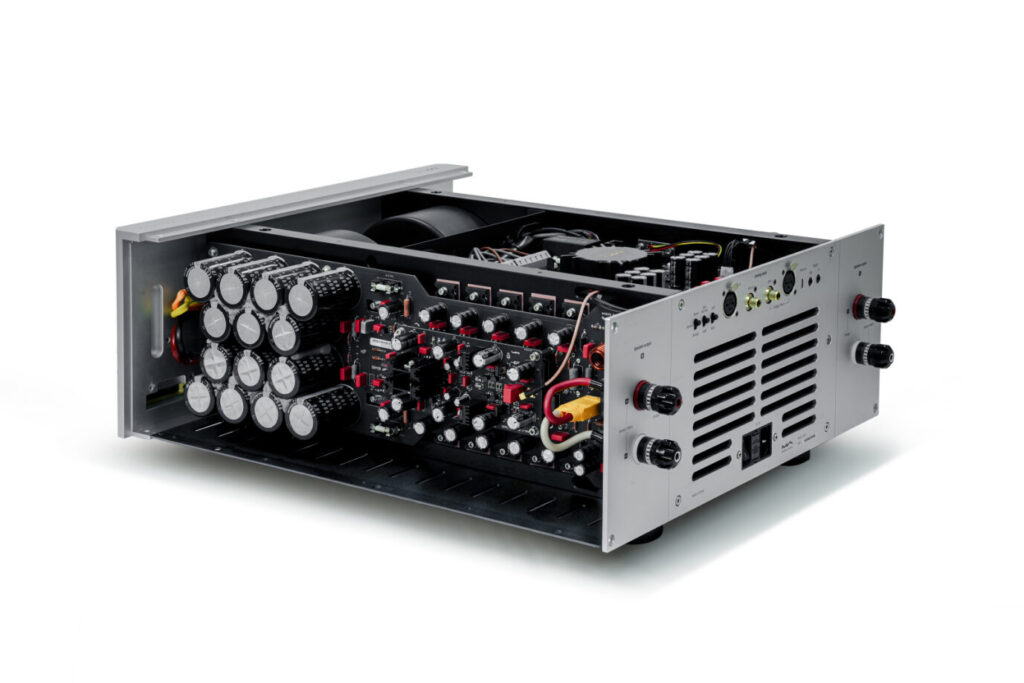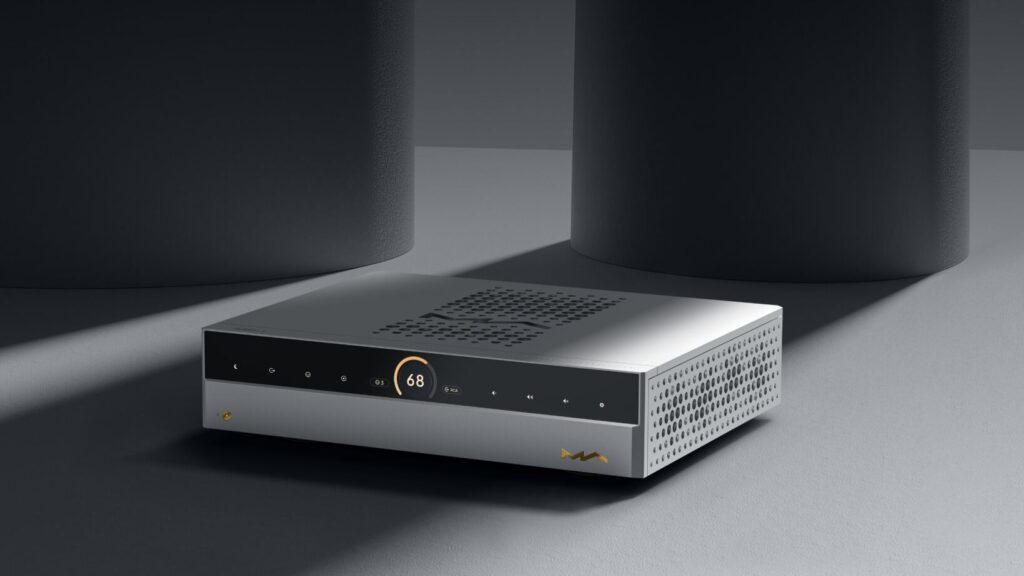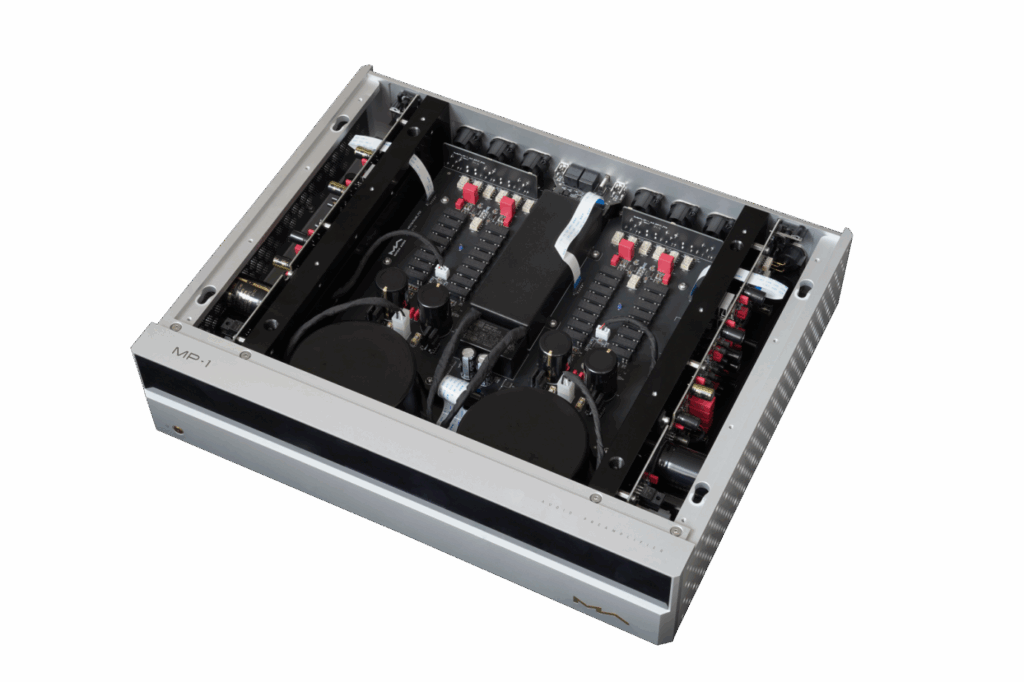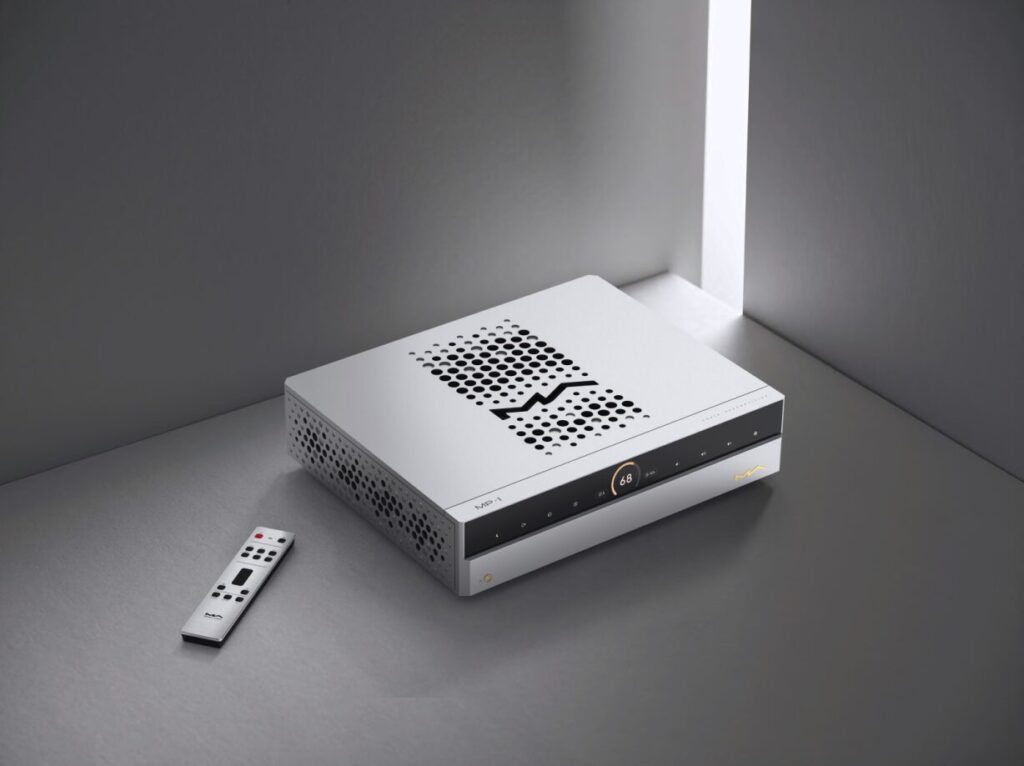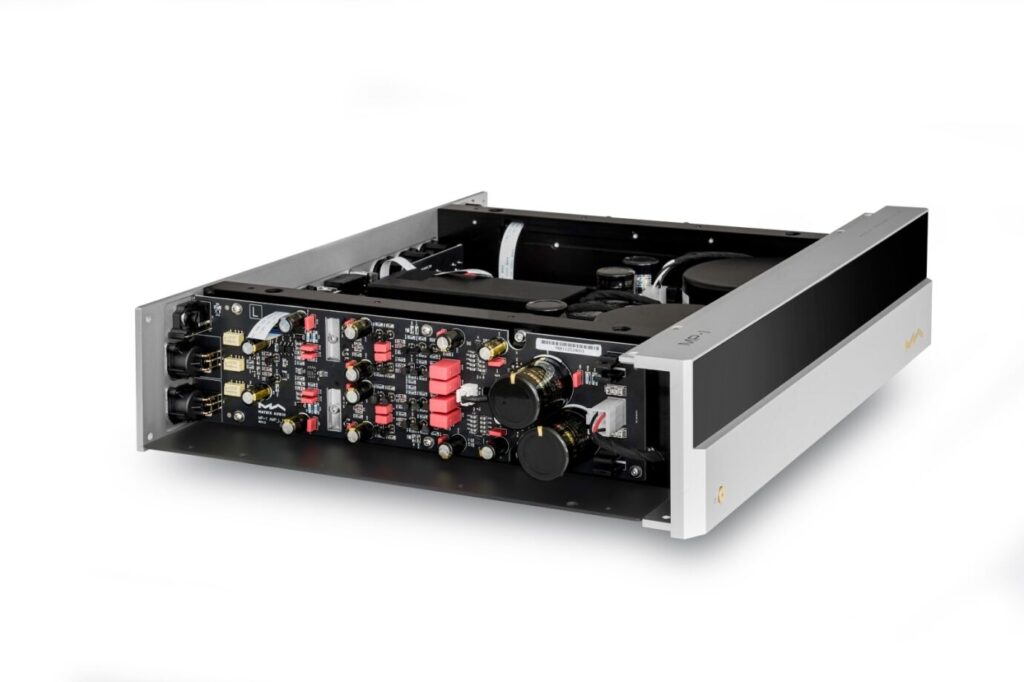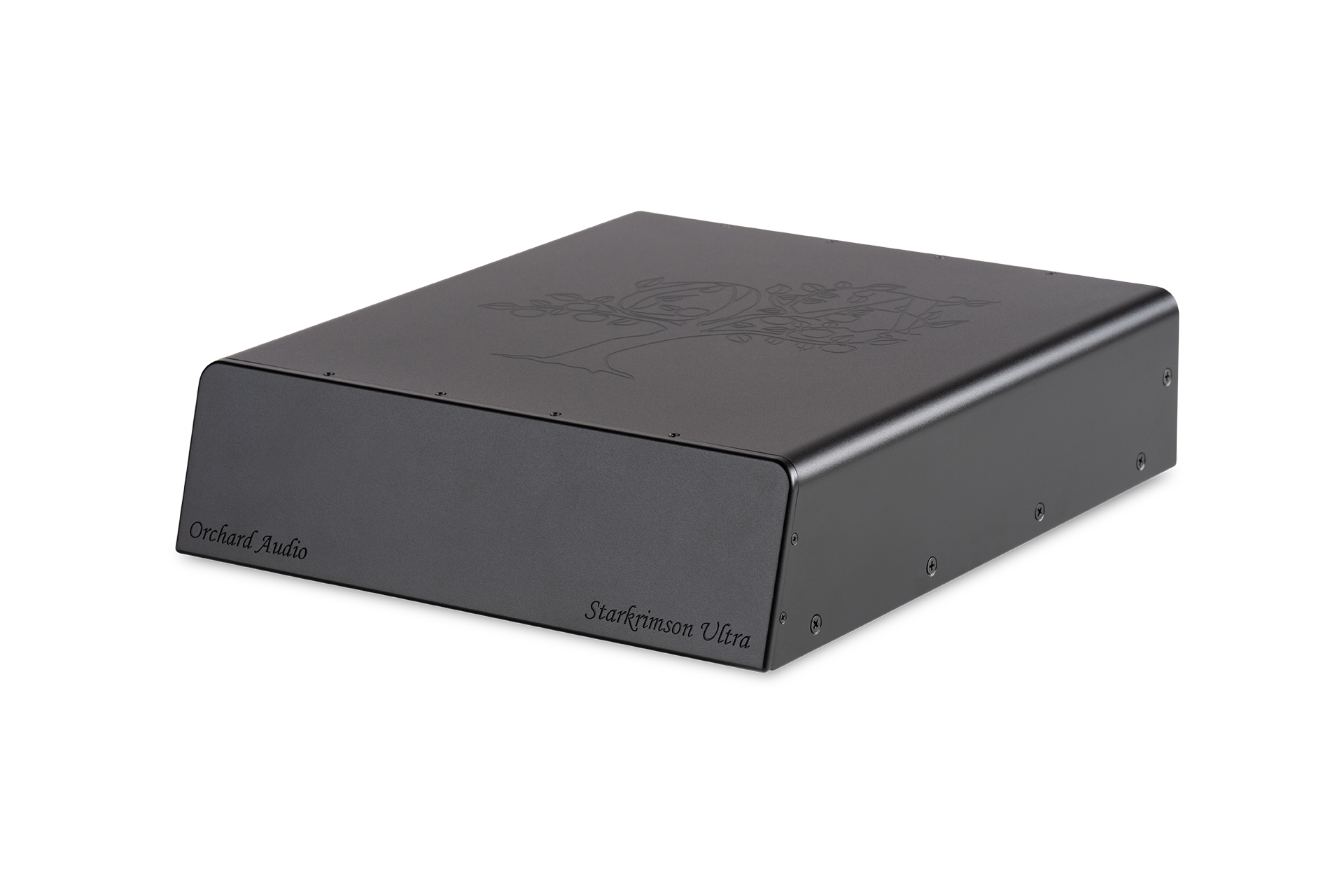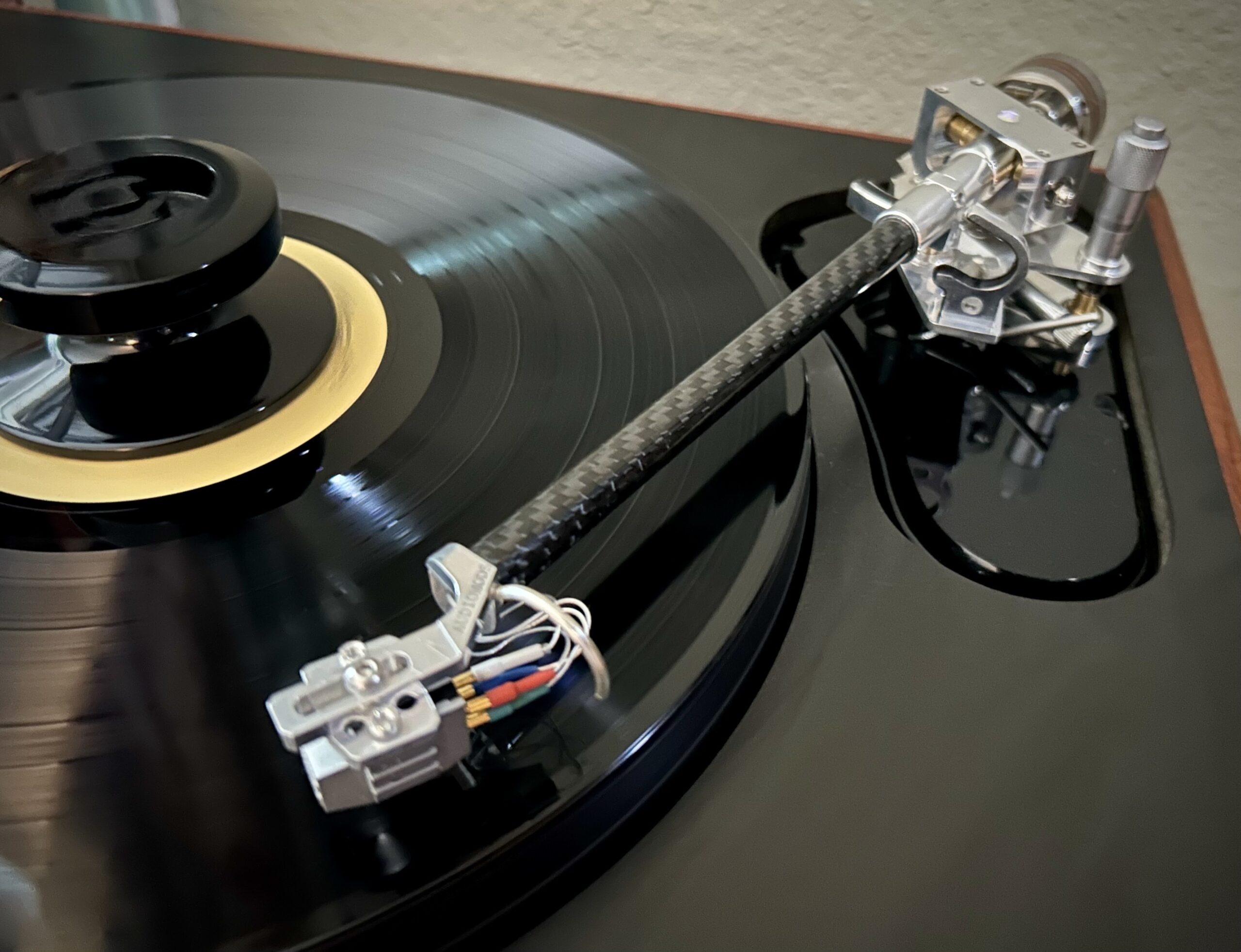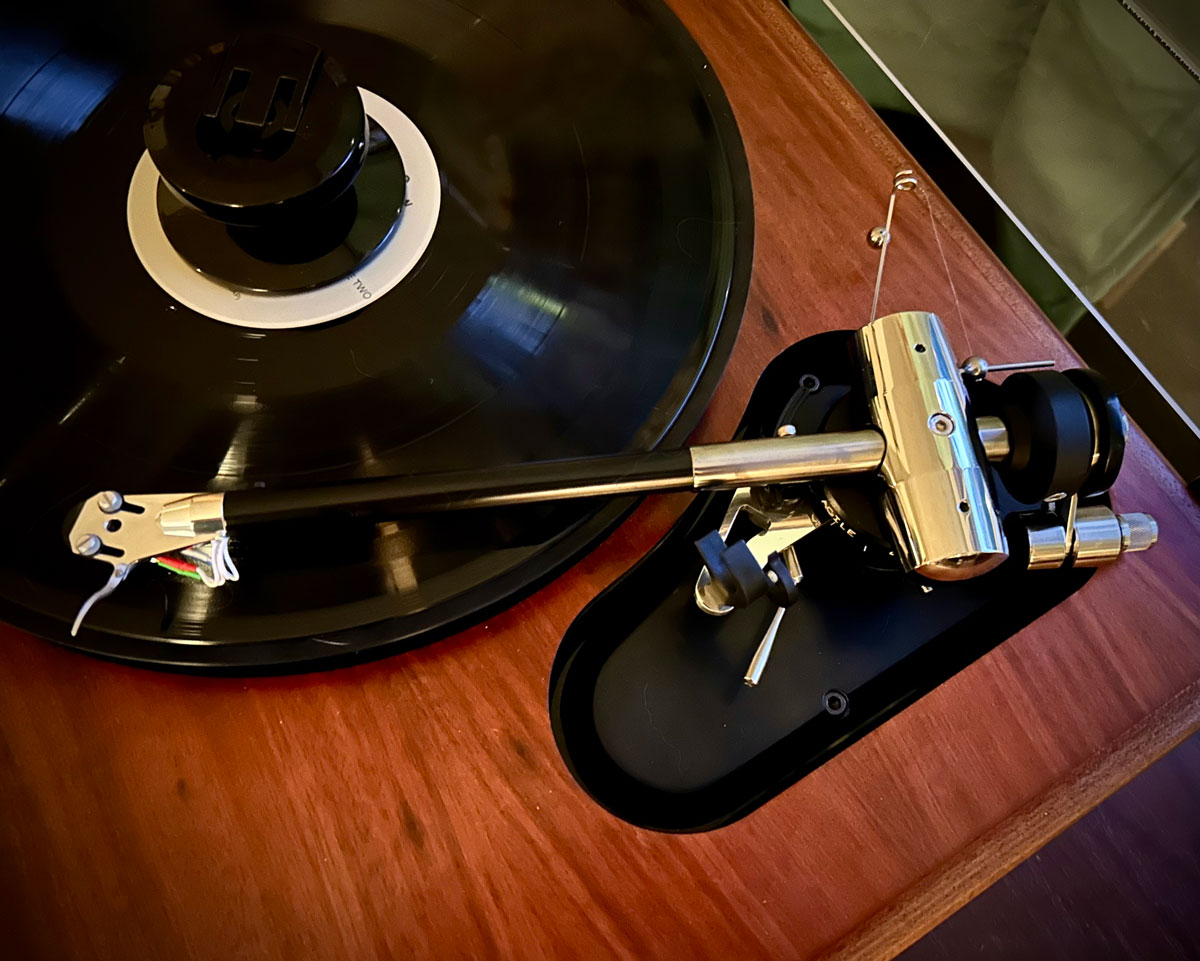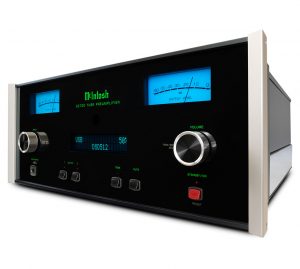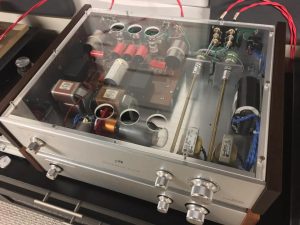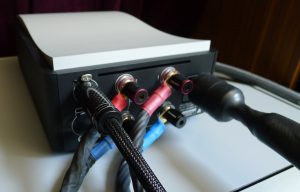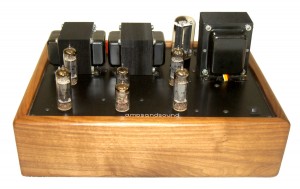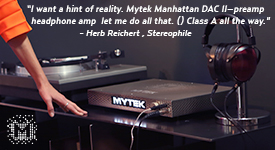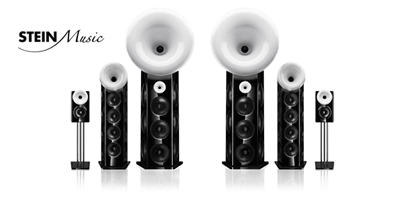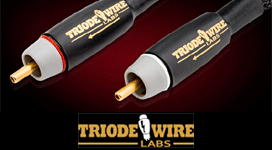"Keep your voices down a little bit" is faintly heard in the background. This phrase is incredibly difficult to decipher in many systems, as it is located deeply in the background of the recording. "Then, a band member says"Oh I will tell you everything," and while it cannot be documented it is likely Christine McVie having a bit of banter with her Fleetwood Mac bandmates. A recording engineer says "two" and someone patches into an amplifier which results in a visceral thump; now this recording session starts in earnest. "Dreams 2" can be found on the Super Deluxe version of Fleetwood Mac Rumours, and is one of those rare tracks that transports the listener into a studio. While this piece is deceptively simple, it has an unvarnished aura that mesmerizes us with Stevie Nicks' distinctive and unique vocal style. This evening I am enjoying this superb album through the recently released Matrix Audio MP-1 preamplifier and MA-1 amplifier.
Established in 2013 by a group of passionate engineers, Matrix Audio has steadily grown and become a major player in the digital world with a deep product line of streaming devices, streaming transports, and headphone audio amplifiers. Mr. Yang Jing is a driving force behind the company, as he oversees the development and design departments. Amplification has always been a passion for Mr Jing, though the passing years he never lost sight of his goals even when guiding the company through its successes in digital audio. Over time there have been several prototype designs that never came to market. Then starting in 2023 many of these designs were revisited and the research and design process gave rise to the MP-1 and MA-1 components.
The MA-1 amplifier and MP-1 preamplifier are statement pieces, and without question are high performance components. The fit and finish is impeccable, and the build quality is equal to or exceeds what is offered by established mainstream audio companies at equivalent price points. For a number of years countries in Eastern Asia have had the manufacturing capability of turning out world class products, this is not a groundbreaking revelation. In the realm of audio, North American and European audiophiles belief system typically places its trust in recognizable names of designers behind companies that are based in their various countries. The common belief is that East Asian manufacturers could fulfill a build sheet or create a derivative product based on electrical circuits designed by others, however, the engineering skills and experience to design and refine the circuits needed for high performance audio components are just not within their abilities at this time. While that may have been some validity to this viewpoint ten or twenty years ago, this pair of components from Matrix Audio will sweep that kind of outdated thinking aside. Make no mistake, these pieces are excellent components capable of bringing music alive in a way that provides an immersive experience when listening to music. The second facet to consider is the relative affordability of these two pieces. Flagship components are never inexpensive, but what consumers get is significant value in terms of build quality, performance, and musical reproduction.
MA-1 Amplifier
The MA-1 amplifier is substantial in both footprint and weight. This is a stereo amplifier that is 17 inches wide (430mm) X 20 inches (518mm) deep X 8 inches (201mm) tall. Weight comes in at 93.5 pounds (42.4kg), which is provided by the massive power supply and unique H frame internal skeleton that Matrix Audio has created. Substantial aluminum panels that form the chassis have been expertly machined and finished. The overall fit and finish of the MA-1 amplifier speak to the effort and resources invested in this component.
The quality of individual parts selected for this amplifier is what you would expect to see on a reference level product. Many components are manufactured at Matrix Audio facilities. The fit and finish of these pieces are superb. WBT speaker binding posts and Wima and Mundorf capacitors are representative of the level of quality of the parts selected for this project. Flagship components are not defined by using parts that are anything less than top shelf, and it is evident that Matrix Audio has put a great deal of thought into the parts selected for this amplifier.
Power output of the MA-1 amplifier is 250 WPC into 8-ohms and 450 WPC into 4-ohms. The amplifier uses 10 ONSEMI transistors per channel. The amplifier is a Class A/B design that remains in Class A for a significant portion of its power range. The amplifier has true dual mono architecture, with independent power supplies for each channel. Each channel contains a 625 watt toroidal transformer and a bank of 14 capacitors with 190,000 µF of capacitance. Furthermore, each channel has separate power supply circuits for the input and amplification stages of the amplifier.
The circuit boards in the MA-1 amplifier are substantial with robust PCB traces. A great deal of effort has been expended to ensure that direct signal paths are maintained to ensure the amplifier has a low noise floor. This architecture allows for fast current delivery and preserves the integrity of the input signal from the source components through the amplifier and to the output devices.
An amplifier of this power output and size is going to generate heat. With the circuit being biased heavily into Class A, thermal management becomes an important consideration. The MA-1 amplifier uses an electronically controlled 12 cm low noise fan that starts up when a preset temperature set point is reached. The aluminum case has a large number of ventilation holes of varying sizes that are designed to create airflow within the amplifier. The system works very well, as I have never heard the fan engage and the amplifier never rises above moderately warm to the touch.
MP-1
The chassis for this MP-1 preamplifier is exactly what you would expect with a reference level component. The aluminum panels are stout, have superb finish, and precisely fitted and assembled. The internal H frame architecture that is found in the MA-1 power amplifier also resides in the preamplifier.
The MP-1 preamplifier is a Class A design that uses a fully differential transistor input stage circuit that maintains excellent linearity and a low noise floor. The fully balanced circuit uses two independent amplification boards for each channel. This is a direct coupled design with no coupling capacitors in the signal path.
The power supply uses a substantial custom toroidal transformer that is wound with flat copper wire. Flat wire has larger surface area, higher current capacity, and lower resistance. All of these traits are desirable for a high performance power supply. The power supply section is contained in a separate compartment that shields the audio circuit from any stray electromagnetic currents. The power supply capacitors are Mundorf M-Lytic series, which is the level of parts you would expect in a flagship preamplifier. Dimensions are 17 inches wide (430mm) by 14 inches deep (349mm) and 4 inches tall (106mm). The MP-1 weighs in at a hefty 34.6 pounds (15.7kg), which is due to the substantial power supply and chassis Matrix has employed.
The volume control circuit is a work of art. This is a relay controlled resistor ladder where the resistor group is matched within 0.001% variation. The relays are sealed modules, so the preamplifier is quiet when the output is being adjusted. The volume control through the remote allows for subtle changes in output, and the user has precise control over the music. As an added bonus the balance control allows for minute adjustments. From a daily use viewpoint, the Matrix Audio preamplifier is versatile and easy to use, which many audiophiles will appreciate.
The back panel allows for three sets of inputs, either XLR or RCA. There are three sets of output connections, with two sets being XLR and one being RCA. The master power switch is next to IEC power input, and in/out ports for a trigger circuit. The front panel uses a digital display that is relatively large and easy to read. All functions can be accessed through a series of soft touch controls on the display. The remote is well made and intuitive to use. A secondary power switch is on the lower left hand corner of the face plate.
When installing the Matrix audio components into my system I started with the MA-1 amplifier in place of the Classe Audio Omega mono-block amplifiers that are my reference pieces. The Trinnov Audio preamplifier stayed in place for the time being, as it paired well with the Matrix amplifier. Connections were made with a pair of Wireworld Silver Eclipse 10 XLR interconnects. The digital source is a terNario Core and Bridge streamer package which feeds a Cen.Grand DSDeluxe 1.0 DAC. Speakers are a pair of JBL 4367 floor-standers from their Synthesis line. I removed my Velodyne sub-woofers in order to experience these speakers being solely driven by the Matrix amplifier. Wireworld Eclipse 8 speaker wires are used, and power conditioning is taken care of by a Balanced Power Technology 2.5 Reference power conditioner and PI Audio Group power cords. The MA-1 amplifier was plugged straight into the wall socket and was not fed by the power conditioner.
The Matrix MA-1 amplifier was initially installed in my system to evaluate how well it would work with the Trinnov preamplifier. The pairing is superb! At a holistic level my experience shows the Matrix amplifier to be a close match to the Classe in terms of musical presentation. The Matrix amplifier is wonderfully transparent, with precisely focused imagery, and a spacious sound-stage. The essence of a recording is clearly portrayed, and a believable rendition of a performer or ensemble emerges.
Photograph by Kendra Shank released on Mapleshade Records is a excellent evaluation tool due to its minimal mic and recorder set up, live to analog two track tape set up, and no post production editing or effects. This piece opens with a set of chimes that shimmer and decays in a breathtaking manner. The following piano passage is light, delicate, and portrayed with an expressive phrasing that feels just right. Kendra's voice comes in front and center, and is smoky and languid. Various percussion instruments come to life from time to time, and are located behind her and slightly off to the side. This album transports the listener to a small and intimate jazz club and the Matrix MA-1 amplifier is an instrumental component for bringing this music alive. The combination of detail and focus is first rate, and does not come at the expense of the tone and texture of the music.
The Classe Omega monoblocks and the Matrix Audio MA-1 amplifier have many sonic similarities, and that does not surprise me since both designers are focused on musical reproduction and integrity of the source signal. Nevertheless there are a few noticeable differences that should be mentioned. When listening to "A Blossom Fell" by Diana Krall I notice that her voice is slightly sweeter, with a greater degree of presence on the Matrix amplifier. Once again the illusion of the performer in the room with me is uncanny, and the phrasing and nuance of her vocal style is clearly experienced. I did find the Matrix amplifier to be responsive to both interconnect and power cables. As an example the Matrix Audio OCC interconnect is rich, textured, and graceful. The Wireworld Silver Eclipse 10 interconnects I often use are a silver/copper hybrid that provide a degree of transparency and definition to the music over a typical copper wire interconnect. This trait of being responsive to cable changes is a positive attribute in my book as the owner of the amplifier can now make subtle but meaningful adjustments to the presentation to meet their needs or preferences.
The JBL 4367 speakers may be considered higher efficiency with 94 dB sensitivity, but these are not the easiest speakers for an amplifier to drive due to the impedance curve in the lower frequency range. There are a couple of points where the speaker dips below 6 Ohms, with the most problematic point being a 3 Ohm dip at 70Hz. To achieve accurate and deep bass the amplifier used with these speakers should be a high current design with fast slew rate, and excellent damping characteristics. On "Mischief" by the Joshua Redman Quartet I find the bass passages to be quick, textured, and lively. The producer mixes the acoustic bass into the back of the recording so it requires a bit of intentional listening to fully absorb how immensely talented Philip Norris is. In the later half of this song Norris puts together a smoking hot bass solo that showcases how well this amplifier controls the 15" woofer in these JBL speakers and teases out not only depth and power but with expressive phrasing that is so difficult to achieve. The Matrix MA-1 amplifier not only possesses deep reserves of power, but is also agile and graceful in the lowest registers.
The Matrix Audio components are complementary pieces rather than clones of each other. The voicing of the MP-1 is shaded towards a richer and robust presentation with a dense tonal tapestry that in many ways shares the strengths commonly associated with vacuum tube preamplifiers. This is not to say this preamplifier is a caricature of a tube based component, but rather they share defining characteristics that are appreciated by many audiophiles. In the case of the MP-1, it excels at combining realistic tonal structure while teasing out the fine details embedded in a recording rather than covering them up with an overly warm mid-band voicing. This combination allows the MP-1 to provide a honest and unvarnished portrayal of the music, and hand it off to the MA-1 amplifier where that musical presentation is expanded and filled in. "Conversation With A Ghost" by Ellis Paul is a deceptively complicated song that is challenging for an audio system to unearth the subtle details embedded in this composition, and not lose this detail in highlighting the darkness and languid flow with which the song is recorded with. Many systems can get the richness of sound in this piece, but lose the interplay between Ellis Paul and his vocal partner Mary Black. The Matrix Audio components stay balanced and surefooted through this song, with just the right balance between detail and warmth, and deftly teases out the complicated interplay between the two vocalists.
The portrayal of dynamic expression is another strength of the Matrix preamplifier and amplifier. Instruments and performers are consistently light footed and nimble, and yet the music can be forceful and primal when called to be. "Ma Benz" by Bridgette has complex vocal passages and this Matrix stack deftly keeps the performers distinct and separate, and yet allows the overlay and weaves of the vocal lines to walk in unison and become a brilliant passage of music. The music builds to a crescendo at the midpoint of this song, and these two components bring forward the passion and hidden energy that lurks below the surface waiting for the opportune moment to make itself known. In the end, the Matrix preamplifier and amplifier are honest and truthful, providing the listener the essence of the music without noticeable embellishments.
I have spent a considerable amount of time with the Matrix Audio MP-1/MA-1 pre and power amplifiers. Arthur at Power Holdings Inc and Mr. Cao at Matrix Audio should be commended for their patience with me while I asked questions regarding the manufacturing process of these components. These two pieces stayed in my system for a number of months and I became intimately familiar with them. What I have experienced reflects the vision and goals that Mr. Yang Jing has for Matrix Audio, and provides insights into what the future may hold for high performance audio in East Asia. The circuit design of these components are based on solid engineering principles, and have been implemented with precision manufacturing processes. The innovative H frame that is the heart of these two components provides a robust foundation for the power supply, audio boards, and output devices to be anchored to. Parts are either machined in company owned facilities, or sourced from the finest suppliers such as WBT, Mundorf, or ONSEMI. The machined aluminum panels are works of art with impeccable fit and finish. The controls and operation of the MP-1 preamplifier are as smooth and refined as a courtier to the royal family. The MA-1 amplifier is reminiscent of a finely tuned sports car where power and control are the calling cards of the day. I suspect the power output rating of 250 WPC is a conservative one, as this amplifier has no difficulty controlling the woofers in my JBL 4367 monitor speakers, and the volume levels I achieved were spectacular. The pairing of the JBL speakers with the MA-1 amplifier provided excellent bass extension, and was on par with the results I get from my Classe Omega mono-block amplifiers. When you take into consideration the quality of sound and the excellent build quality the value these two pieces represent is impressive. I would say Matrix Audio has hit a home run with their roll-out of these pieces aimed at the high-performance segment of our hobby. If you have an opportunity to listen to the Matrix Audio pieces at a dealer or audio show be sure to take the time to do so. I have to believe you will be as impressed as I am.
MA-1 Amplifier
Retail: $7999
MP-1 Preamplifier
Retail: $6999
Matrix Audio

